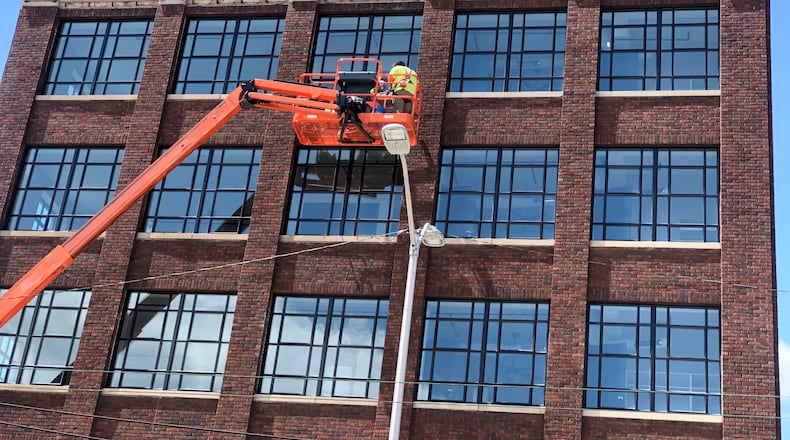Developers like the Windsor Companies said they remain bullish about the Dayton area’s housing market and plan to continue to expand on their already considerable investments.
“As large employers relocate to Dayton and current employers based in Dayton grow, the already high demand for housing in the area will continue to increase,” said David Neal, Windsor Companies’ chief operating officer.
Last year, the Dayton metro area saw a 38% increase in new privately owned residential units approved through building permits, according to Census building permit survey data released this month.
The new unit count was the most since 2006. The metro area consists of Montgomery, Miami and Greene counties.
Housing units include houses, apartments and rooms or groups of rooms used as separate living quarters.
Only three other Ohio metro areas last year saw more robust growth in new units authorized: Mansfield (+236% increase), Springfield (+83%); and Columbus (+53%).
Data collected by the Home Builders Association of Dayton show 2,382 single-family permits were issued in 2020, which was the second most since 2006 and the largest tally in the past decade, said Eric Farrell, the association’s CEO.
The association compiles building permit data from municipalities across five local counties: Montgomery, Greene, Warren, Preble and Darke counties.
“By all standards, housing has led the economy and has led the recovery,” Farrell said.
Homes have never been more important, Farrell said, since the role they play in people’s lives transformed during the pandemic.
Bedrooms, garages and living spaces have been turned into offices, gyms, schooling and play areas and sanctuaries, he said.
Credit: Tom Gilliam
Credit: Tom Gilliam
Many people decided they wanted more useable space, Farrell said, and new home construction surged to meet the demand for more living space and outdoor space.
Low interest rates also have fueled interest in homeownership, Farrell said, and surveys show that the vast majority of people view homeownership as a better investment than the stock market.
“Homeownership provides stability,” he said. “Every month, (buyers) are gaining more equity in their homes.”
The nation saw sizable increases last year in housing starts, particularly single-family starts, though multifamily starts dipped, according to Census data analyzed by the National Association of Home Builders.
The association predicted that slowing rent growth and rising vacancy rates will weaken the multifamily construction market this year. However, the group predicts a rebound in 2022.
But Census data show the Dayton metro area saw the most explosive growth in approved units in multifamily structures with three or more dwellings
Downtown Dayton added 92 new apartments in 2020, all in the Fire Blocks District, and another 379 units likely will be added in the next one to two years, said Scott Murphy, vice president of economic development with the Downtown Dayton Partnership.
Credit: Tom Gilliam
Credit: Tom Gilliam
Downtown Dayton’s residential occupancy rate remains in the 90% to 95% range, even though the supply of downtown housing units has increased more than 75% since 2010, he said.
“Downtown development projects that had secured financing or were close to closing on financing prior to the pandemic continued mostly uninterrupted last year,” Murphy said. “In the second half of 2020, we saw some delays around construction financing for new projects, but that seems to be improving so far in 2021.”
Windsor Companies, the developer of the Fire Blocks District, received a building permit last year to renovate the upper floors of the vacant Graphic Arts building at 221 S. Ludlow Ave. into new loft apartments.
The company has 10 adaptive reuse projects in downtown, and multifamily and single-family home development is a major part of its construction activities and portfolio, said Neal, the COO.
Windsor has nearly 250 housing units in the Dayton market, and its investment in acquisition and development exceeds $130 million, though that includes housing, office and other amenity spaces, Neal said.
“As long as the opportunity to make a positive impact exists, we will be buying and redeveloping in the Dayton region,” he said.
Credit: Tom Gilliam
Credit: Tom Gilliam
Like new housing, remodeling projects also were in high demand during the coronavirus crisis.
The office and commercial sector suffered, as many people worked from home and many leisure and entertainment activities were shut down or restricted.
The city of Dayton saw a -0.2% decrease in residential building permits last year, but an 18% decrease in commercial building permits, according to Ford Weber, Dayton’s director of economic development.
About the Author






